16.11.2021
A half century ago, Mariner 9 — our first orbiter at another planet — showed us the real Mars.

NASA's Mariner 9 spacecraft weighed 1 ton at launch, and its solar-cell panels spanned 22.6 feet (6.9 meters from tip to tip. Its cluster of 5 cameras and spectrometers is on a platform beneath the communications dish.
NASA
Hard to believe it was just 50 years ago today. Time flies when you’re exploring your solar system for the first time. As a space-obsessed 11-year-old, I was riveted by the drama of Mariner 9. On November 14, 1971, two years after humans first set foot on the Moon, the spacecraft arrived at Mars — a world still almost completely unknown, and completely misunderstood.
One could argue that this was the moment we first became a multi-planet species. We had already sent flyby missions to Mars and Venus, but they just soared past, quickly approaching and receding into the void. Their cameras and other instruments caught only brief, fragmentary glimpses.
Mariner 9 was the first interplanetary craft to bring a game-changing piece of equipment: a rocket engine powerful enough to slow the spacecraft down when it reached Mars and place it into a stable orbit. Its arrival marked the first time we went to another planet to stay.
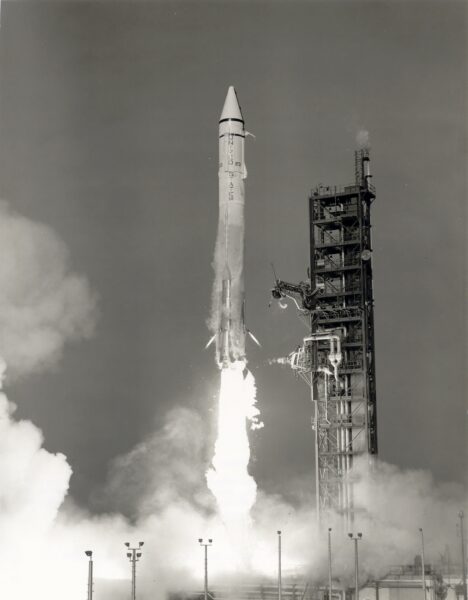
U.S. Air Force
It wasn’t our first attempt. In the early days of the space age, we built spacecraft in pairs, as a hedge against all-too-frequent failures. Mariner 8, launched three weeks earlier, sadly became an “oceanic mission,” tumbling out of control six minutes into flight and falling into the Atlantic. As of this writing (knock on wood), it is still the last U.S. planetary craft lost to a launch accident. The failure was mysterious and still under investigation at the time of the Mariner 9 launch, which greatly increased the anxiety that such moments bring. But the launch went off without a hitch, and the team adjusted its flight plan and orbit to achieve as much as possible of both missions’ objectives.
The cruise across interplanetary space was mostly uneventful, and the game-changing rocket burn to enter Martian orbit worked like a charm. But when Mariner 9 began to photograph the planet, it saw . . . nothing. The cameras were working fine, but Mars was enshrouded by a planet-wide dust storm of the kind we now know occurs every few years. As the dust settled over the next several weeks, we caught ever-sharpening views of a new Mars, with giant volcanoes; massive, eroded canyons; ancient river valleys; vast dune fields; and swirls of polar ice.
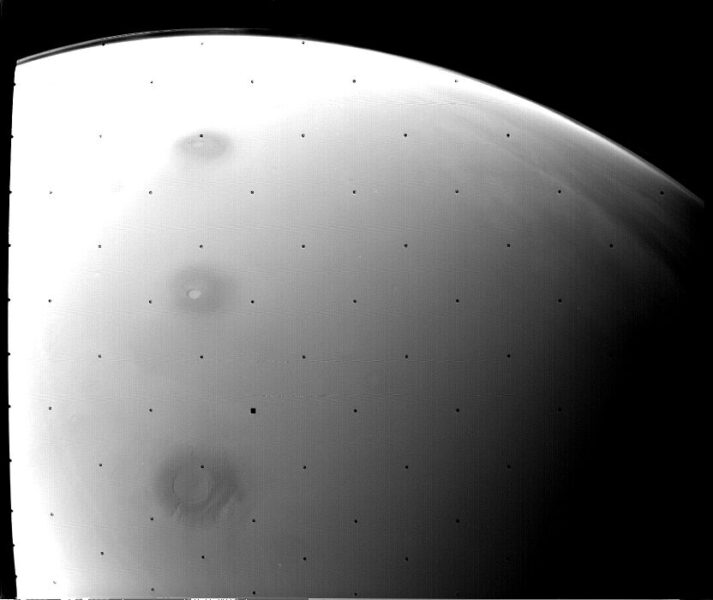
NASA / Piotr Masek
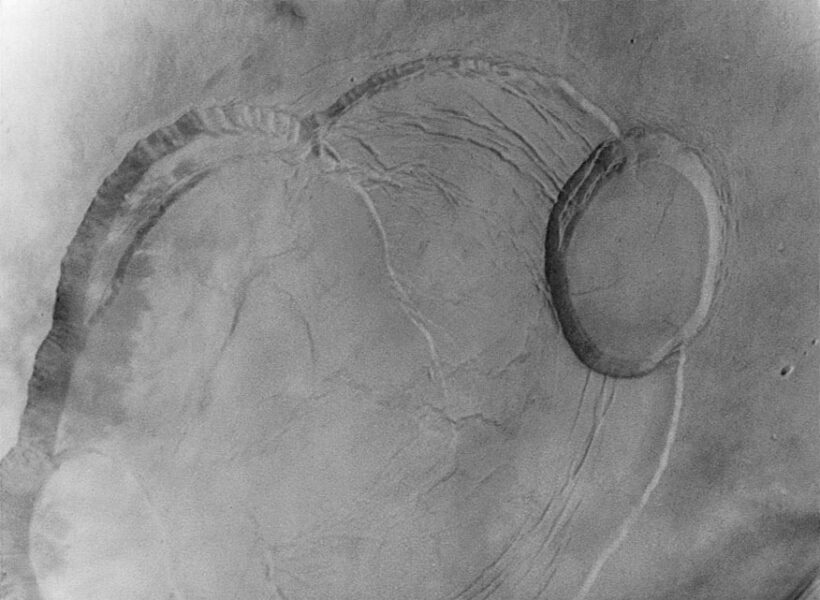
NASA / JPL / Justin Cowart / CC BY 2.0
This was our first detailed global view of another planet. As the spacecraft orbited and filled in the holes in the maps it was making, we realized we’d been fooled by the spotty coverage of earlier flyby missions and blurry ground-based images. Before Mariner 9, some scientists thought the surface could be marked by seasonal vegetation; others thought it resembled the Moon’s landscape, with ancient craters and a uniform, inactive surface.
Mariner 9 blew away all of these preconceived notions, replacing them with lasting images of the beguiling complexity of the windblown world next door.
What we saw instead was a stunning diversity of landscapes of the widest possible range in ages, from heavily cratered uplands that formed billions of years ago to windblown vistas still in formation today. And because the spacecraft took up residence around the planet, it gave us increased coverage not only in space but in time. We watched clouds and storms come and go and saw the polar ice caps shift. The mission revealed the complex seasonal cycles by which Mars trades carbon dioxide and water between its atmospheric and polar reservoirs.
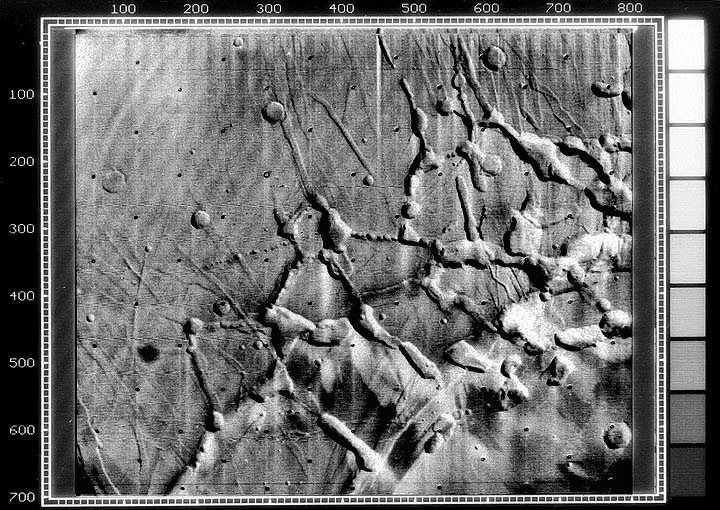
NASA
Beginning a frequent and delightful pattern for NASA deep-space missions, Mariner 9 greatly outlived its 90-day “nominal” mission and succeeded in mapping virtually the entire planet. It operated for nearly a year before running out of attitude control gas and tumbling out of control on October 27, 1972.
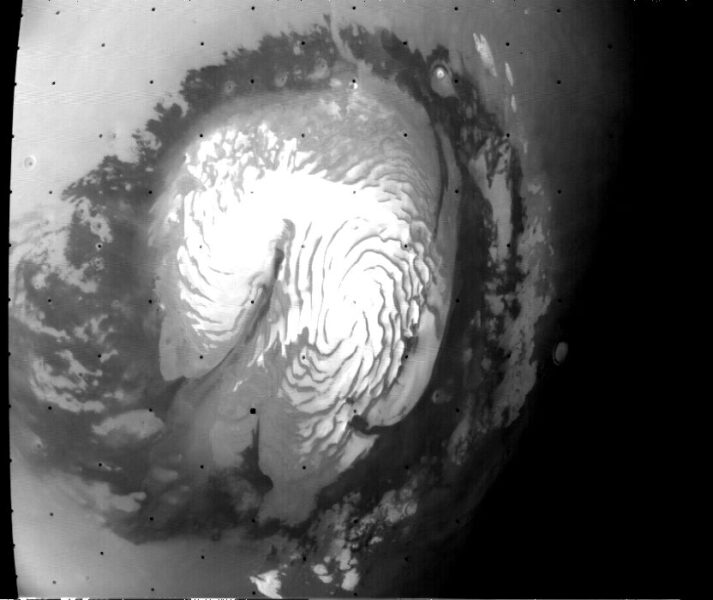
NASA / Piotr Masek
At that time the spacecraft was projected to remain in orbit for about 50 years, which would mean that right about now it should finally be descending into the upper atmosphere. These estimates were very rough, and since the craft is derelict, we actually have no idea if it’s still in orbit or, having already tumbled through the Martian air, is now in broken and burnt pieces scattered across some dusty cold landscape.
Either way it’s still at Mars and will remain in our hearts and history books as the first human-built satellite of another planet.
